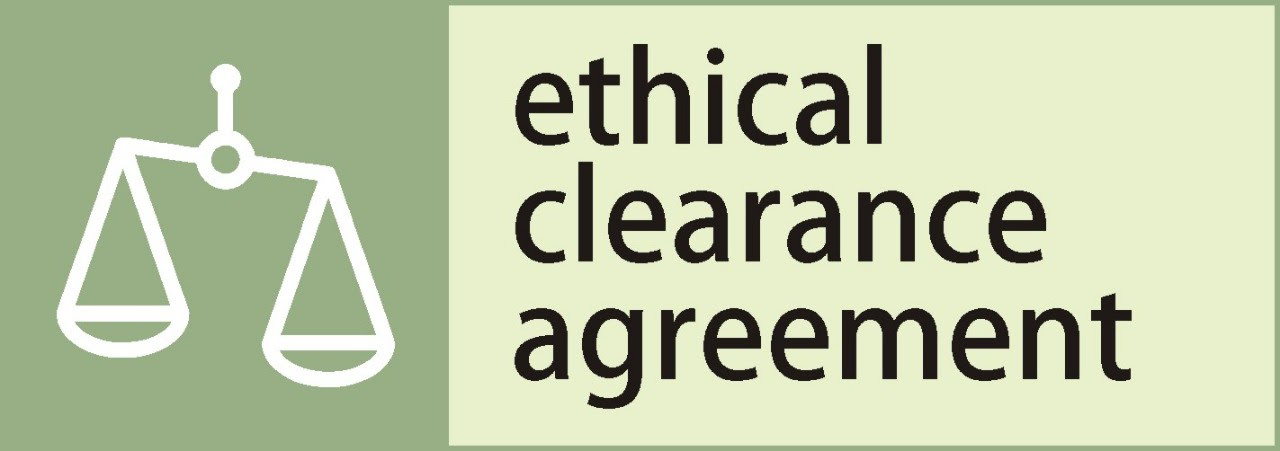Developing a Dictionary Model for Balinese Speech Levels: A Study Based on Classification Principles and Semantic Feature Analysis
DOI:
https://doi.org/10.24843/JKB.2025.v15.i02.p10Keywords:
speech levels, dictionary development model, multiple identities of the Balinese lexicon, a matrix of the Balinese lexical semantic differentiationAbstract
This study aimed to develop a model for addressing multiple identities of the Balinese lexicon within the anggah-ungguhing (speech level) system. The model developed is expected to resolve the multiple identities frequently found in the Balinese speech level dictionaries and similar references. Furthermore, this study was based on the principles of classification, applying the theory of lexical semantic feature differentiation. A qualitative method was used, and the data were collected through document recording and questionnaire methods. The data were then analyzed using the extralingual context method, with a focus on the domain of lexical use. This process facilitated the creation of a matrix for the Balinese lexical semantic differentiation and a work table for vocabulary identification within the speech level system. The two conceptual products effectively addressed the multiple identities of the Balinese words within the speech level system.
References
Ardiyasa, I N. S. (2012). Catatan Perjuangan Bahasa Bali dalam Kurikulum 2013. Jurnal Kajian Bali, 2(2), 1 – 20. https://ojs.unud.ac.id/index.php/kajianbali/article/view/15655/10448
Arnawa, N. (2008). Wawasan Linguistik dan Pengajaran Bahasa. Plawa Sari.
Arnawa, N., Gunartha, I W. & Sadwika I N. (2018). Balinese Hegemonic Poltness in Awig-Awig of Desa Pakraman. Theory and Practice in Language Studies, 8 (11), 1485 – 1493. http://dx.doi.org/10.17507/tpls.0811.13
Arnawa, N., Ariawati, N.W;, Erawati, N. K.R. & Sulibra, I K. N. (2022). Pragmalinguistics Politeness in the Balinese Language. Theory and Practice in Language Studies, 12 (9), 1748-1755. https://doi.org/10.17507/tpls.1209.06
Asa, I M. (1985). Pelajahan Sor-Singgih Basa Bali. Unpublished
Bagus, I G.N., Naryana, I B. U. & Granoka, I. W. (1979). Unda Usuk Bahasa Bali. Research Report. Unpublished.
Bakenova, A., Mazhitayeva, S., Kenzhegaliyev, S., Zhartybayev, A., Balmagambetova, Z. & Yesmatova, M. (2023). Componential Analysis of Ana/Mat'/Mother Words: Mother Prototype Extension. Theory and Practice in Language Studies, 13(6), 1413-1420. https://doi.org/10.17507/tpls.1306.09
Belfarhi, K. (2013). The componential analysis of literary meaning. Colombian Applied Linguistics Journal, 15(2), 288–301. https://doi.org/10.14483/udistrital.jour.calj.2013.2.a010
Chaer, A. (1990). Pengantar Semantik Bahasa Indonesia. Rineka Cipta.
Chaer, A. (2007). Leksikologi dan Leksikografi Indonesia. Rineka Cipta.
Culpaper, J. (2021). Sociopragmatics: Root and Definition. Sociopragmatics, 15 – 29. https://www.cambridge.org/core
Djajasudarma, T. F. (1993). Metode Linguistik: Ancangan Metode dan Kajian. Eresco.
Dwiyanto, A. (2023). Statistika Deskriptif: Pengertian, Fungsi dan Jenisnya. https://www.academia.edu/95824108/Statistika_Deskriptif_Pengertian_Fungsi_dan_Jenisnya
Frawley, W. (1992). Linguistic Semantic. Lawrence Erlbaum Associates.
Huddleston, R. (2016). Componential analysis: the sememe and the concept of distinctiveness. Canadian Linguistics Journal, 1-17. https://doi.org/10.1017/S0008413100007519
Jendra, I W. (2007). Sosiolinguistik: Teori dan Penerapannya. Paramita.
Kim, S.M. (2023). Korean Imperatives at Two Different Speech Levels Alternate Ways of Taking Part in Others’ Actions and Affairs. Pragmatics, 33 (4), 559 – 591. https://doi.org/10.1075/prag.20060.kim
Mahsun. (2005). Metode Penelitian Bahasa. Radja Grafindo Persada.
Marzuki. (1996). Metodologi Riset. BPFE-UII.
Mastini, G. N. (2019). Rasa Bahasa dalam Bahasa Bali. Kalangwan 9 (2), 122 – 125. https://ejournal.ihdn.ac.id/index.php/Kalangwan/article/view/1231
Muhadjir, N. H. (2017). Metode Penelitian Kualitatif. Rake Sarasin.
Nwachi, E.S. (2020). Componential Analysis of ‘Gba’ Verbal Complex and Its Relevance in Second Language Teaching. Journal of Language Teaching and Research, 11(6), 1027-1036. http://dx.doi.org/10.17507/jltr.1106.23
Nurjaya, I G. Sudiara, I N.S., Arifin. (2013). Penyusunan Kamus Sor-Singgih Basa Bali – Indonesia untuk Menunjang Pembelajaran Bahasa Bali Siswa Sekolah Dasar dan Sekolah Menengah di Provinsi Bali. Research Report. Universitas Pendidikan Ganesha. unpublished.
Gubernur Bali. (2018). Perda Nomor 1 tahun 2018 tentang Bahasa, Aksara, dan Sastra Bali. https://peraturan.bpk.go.id/Details/85710/perda-prov-bali-no-1-tahun-2018
Gubernur Bali. (2018). Peraturan Gubernur Bali Nomor 80 tahun 2018 tentang Pelindungan dan Penggunaan Bahasa, Aksara, dan Sastra Bali serta Penyelenggaraan Bulan Bahasa Bali. https://bpbd.bulelengkab.go.id/informasi/detail/bank-data/peraturan-gubernur-bali-no80-tahun-2018-tentang-pelindungan-dan-penggunaan-bahasa-aksara-dan-sastra-bali-serta-penyelenggaraan-bulan-bahasa-bali-62
Indrawan-Jendra, M. I. (2010). Sociolinguistics: The Study of Societies’ Language. Graha Ilmu.
Parera, J. D. (1990). Teori Semantik. Erlangga.
Poespoprodjo, W., Gilarso, E.T. (2021). Logika Ilmu Menalar. Pustaka Grafika.
Praminatih, G.A. (2021). Shifting Speech Levels: Exploring Balinese Women’s Language in Inter-Caste Marriage Communication Contexts. Jurnal Kajian Bali, 11(1), 61 – 76. https://ojs.unud.ac.id/index.php/kajianbali/article/view/65996/39071
Suandi, N. dan Indriani, M.S. (2016). Tindak Komunikasi Verbal dan Nonverbal Bentuk Lepas Hormat dalam Bahasa Bali. Jurnal Kajian Bali, 6 (1), 37 – 58. https://ojs.unud.ac.id/index.php/kajianbali/article/view/19895/13211
Scherer K.R., Giles, H. (1979). Social Markers in Speech. Cambridge University Press.
Spencer-Oatey, H. (2000). Culturally Speaking. Continuum.
Strauss, A., Corbin J. (2003). Dasar-Dasar penelitian Kualitatif. Pustaka Pelajar.
Sudaryanto. (1993). Metode dan Aneka Teknik Analisis Bahasa. Duta Wacana University Press.
Sugiyono. (2012). Metode Penelitian Pendidikan: Pendekatan Kuantitatif, Kualitatif, dan R&D. Alfabeta.
Sumarsono. (2004). Buku Ajar Filsafat Bahasa. Grasindo.
Sumarsono. (2007). Pengantar Semantik. Pustaka Pelajar.
Surajiyo; Astanto, S. & Andani, S. (2008). Dasar-Dasar Logika. Jakarta: Bumi Aksara.
Suwendi, I M. (2016). Berbahasa Bali dengan Baik dan Benar. Jurnal Widya Accarya, 6 (2), 199 -211. http://43.243.142.146/index.php/widyaaccarya/article/view/308/276
Suwija, I N. (2008). Kamus Anggah-Ungguhing Basa Bali. Plawa Sari.
Suwija, I N. (2018). Role of Anggah-Ungguh Kruna in Balinese Language Sentence Formation. International Journal of Social Sciences and Humanities, 2 (3), 21-32. https://media.neliti.com/media/publications/268716-role-of-anggah-ungguh-kruna-in-balinese-d4c89899.pdf
Tinggen, I N. (1994). Sor-Singgih Basa Bali. Rhika Dewata.
Toyomura, A; Fujii, T, Nakabayashi, K; Smith, D.R.R; Toyama, J. & Kawabata, Y. (2020). Speech Levels: Do we talk at the same level as we wish others to and assume they do? Acoustical Science and Technology 41(6), 841-84. https://doi.org/10.1250/ast.41.841
Ullmann, S. (1977). Semantics: An Introduction to The Science of Meaning. Basil Blackwell.
Wardhaugh, R. (1986). An Introduction to Sociolinguistics. Basil Blackwell.
Zheng, S. (2015). A Study of Politeness Strategies in Persuasive English Business Letters from the Perspective of Londo’s AIDA Formula. Theory and Practice in Language Studies, 5 (7), 1467 – 1475. http://dx.doi.org/10.17507/tpls.0507.20
















